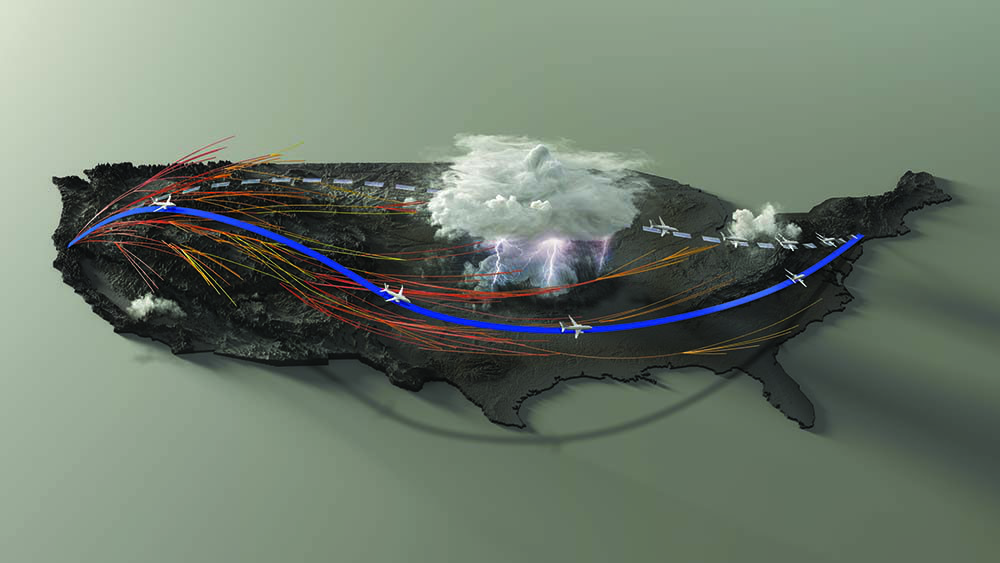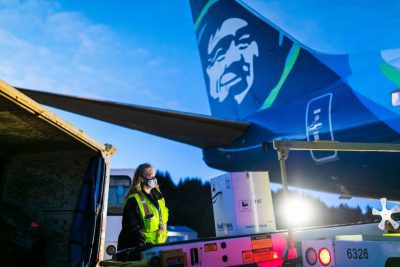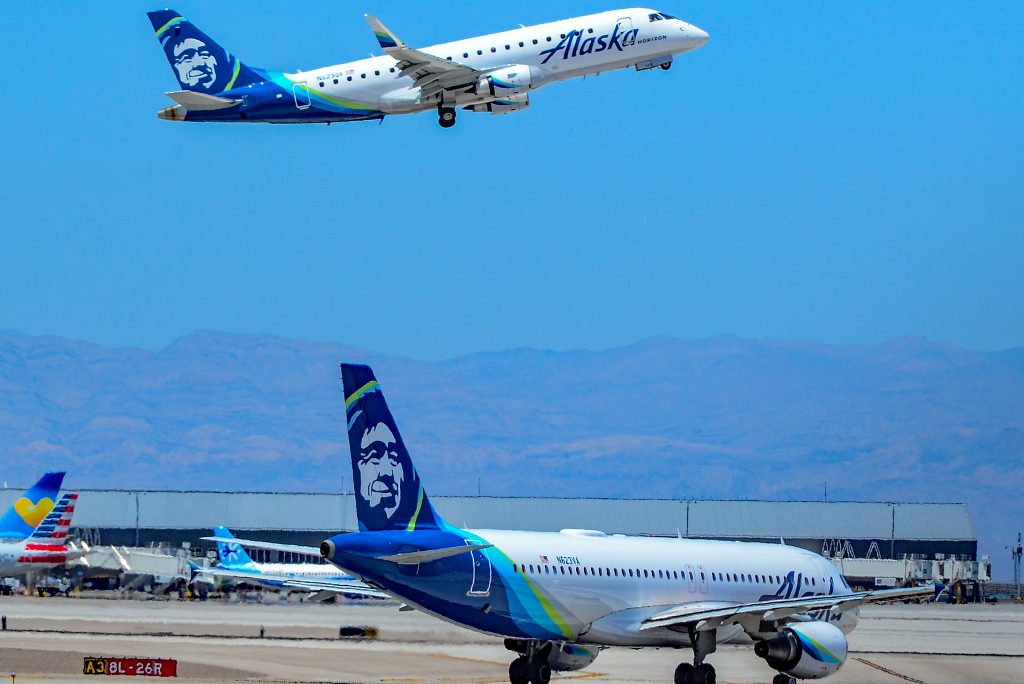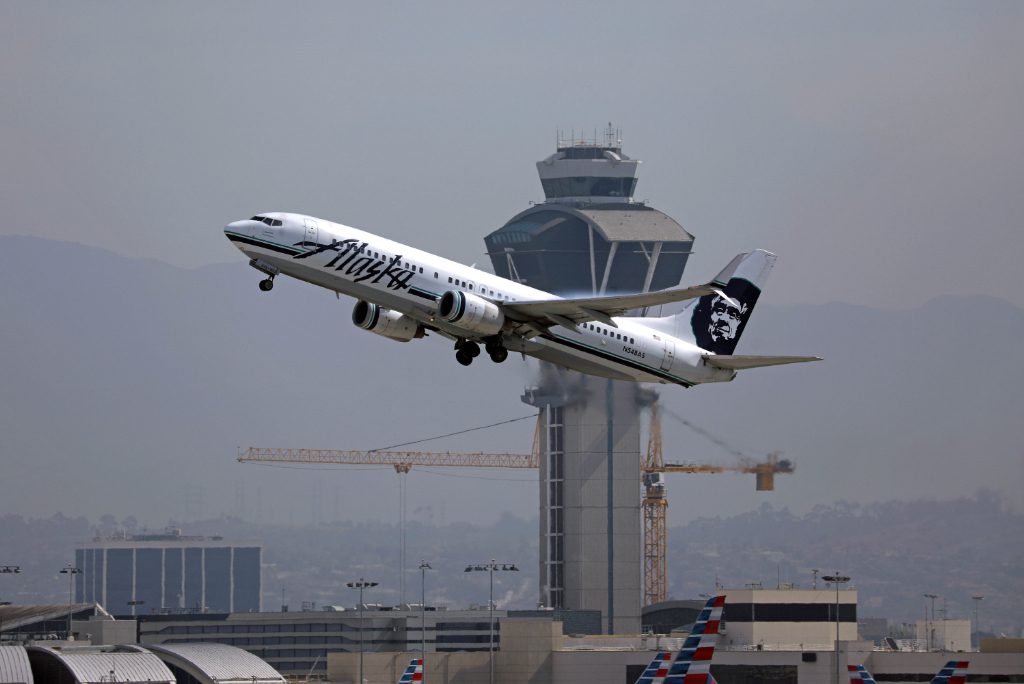Skift Take
Until now, artificial intelligence has mostly been hype. But AI is starting to save travel companies real money by making smarter predictions about events that impact operations.
Next-gen software is redrawing the routes planes fly between airports, avoiding traffic jams in the sky and saving Alaska Airlines millions of dollars.
“We’re getting an outsized benefit right now because we’re the only airline that’s using the software,” said Pasha Saleh, flight operations strategy and innovation director for Alaska Airlines. “That means we get to design these bespoke routes for ourselves while everyone else is essentially relegated to the traditional paths that human dispatchers come up with unaided.”
In the past, when a Los Angeles-bound Alaska Airlines plane flew out of Anchorage, the carrier padded the flight schedule to include extra time in case of surprise delays. Yet in recent months Alaska has trialed a new route-mapping software from the startup Airspace Intelligence. The software suggests paths in the sky that are tailored to real-time weather and traffic and may be more desirable. Passengers may soon see arrival times are more accurate.
Experts predict that flight dispatching at airlines worldwide will improve with the help of powerful number-crunching software that uses artificial intelligence, or AI.
Today, the typical airline flight dispatcher essentially plans the route that an aircraft will take between airports by doing a bit of math, picturing in their head what storm data on radar might mean for a flight’s trajectory — while using route maps that planes have flown before as inspiration.
“Before this job, I was a professional pilot for a while,” Saleh said. “I can’t tell you how many times I’ve been taking off early ahead of schedule, telling my passengers the whole way, ‘We’re going to get you there 20 minutes early,’ and then we ended up arriving 40 minutes late. The use of AI software by all airlines could reduce how often that happens.”

A photo illustration of the complexities of planning flights for Alaska Airlines and other carriers. Source: Airspace-Intelligence
Alaska Airlines may have found a better way. It recently has been piloting software called Flyways AI. The software predicts extreme weather and air traffic with greater accuracy. The intel helps dispatchers create flight plans less prone to revision. That precision, in turn, enables the airline to trim its fuel use and make its operations more predictable and cost-effective.
“Eventually, most airlines will deploy AI for flight dispatch,” Saleh said. “So our total savings in time between point A and point B on our average flight may not be as much once others copy the technique. But we’ll still enjoy lasting gains in average fuel savings, a reduced CO2 [carbon dioxide] emission footprint, and the operational knock-on effects of greater predictability about flight arrival times.”
After a six-month pilot with the software that began around December, Alaska reduced its fuel use by 480,000 gallons and trimmed nearly 4,600 tons of carbon dioxide emissions.
Airlines Embracing Artificial Intelligence
The carrier’s move is part of a larger trend. Until recently, travel companies haven’t used much artificial intelligence, besides setting prices, buying ads online, and offering automated customer service.

Alaska Airlines worker loads cargo onto an aircraft during the Covid-19 pandemic. Source: Alaska Airlines
But step by step, travel companies are experimenting with ways to use computational artificial intelligence, similar to the software companies such as Amazon use to crunch numbers quickly to make predictions that can make operations, such as delivery logistics, more efficient.
“Every flight has its route first planned by a dispatcher, but each dispatchers sort of works in isolation and doesn’t know everything that everyone else is doing,” Saleh of Alaska Airlines said. “So very often unintentionally, one dispatcher’s flight plan creates conflicts with others’, and plans from different airlines can conflict, too.”
“That’s how you can end up with ten flights arriving at SeaTac [Seattle-Tacoma’s main airport] within five minutes,” Saleh said. “Better predictions can help airlines avoid that, essentially showing the impact of one dispatcher’s decision on every other flight.”
Airlines use flight-planning software from vendors or in-house. Widely used systems include Boeing’s Jeppesen, Sabre’s Flight Plan Manager, airline owned tech provider SITA [Société Internationale de Télécommunications Aéronautiques] (though it is pulling out of flight planning), Leidos‘s 1800wxbrief (which offers related services for flight dispatchers), Lufthansa Systems’ Lido Flight 4D, and Airbus’ Navblue N-Flight Planning.
Alaska uses Jeppesen.
“If our dispatcher likes the route recommended by the Flyways software, they essentially copy and paste the data into the Jeppesen system, which is already FAA [Federal Aviation Administration] approved,” Saleh said. “So we avoid needing regulatory approval or spending a lot of money swapping out systems because the Flyways isn’t mission-critical and is just a decision-support tool. The dispatcher can do their job even if the recommendations stop coming for some reason.”
Flight dispatchers have multiple tabs open on their computers in Alaska’s network operations center. One of those tabs is now the startup’s browser-based recommendations. They suggest where a plane should climb or drop in altitude and what paths it could optimally take — using dynamic mapping across a time scale.
Landing planes more predictably with fewer surprises can help in other ways besides saving fuel and pleasing passengers. Greater predictability can enable airlines to be more accurate about planning their labor needs for flight crews, for instance.

Above, an Alaska Airlines Airbus A320-214 s/n 2740, and below, a former Horizon Air Embraer at Las Vegas McCarran International Airport in Nevada in 2019. Source: TDelCoro/Flickr/Creative Commons
After takeoff, an airport’s air traffic control tower passes the job of managing the flight to controllers at regional centers, which typically hand flights to other centers until an aircraft reaches its destination. All of these centers for all airlines could theoretically benefit from more accurate predictions about when storms or traffic might block certain “lanes” in interstate “skyways.”
Saleh recalls an “ah-ha” moment he had when he knew the use of artificial intelligence would have promise.
“Before the pandemic, Ben Minicucci — now our new CEO but then still the president of the company — came by to have a look after the team had trialed it and offered feedback to the developers for about a year,” Saleh said. “Ben said it was game-changing that we were the first airline to get this. So for even someone at his level, who has to think about such a broad operation, it wasn’t lost on him that this software represented a real opportunity.”
UPDATE: The article has been updated to add Navblue and to update the status of SITA’s product.
Skift AI Travel Newsletter
AI coverage across travel sectors that’s focused on separating trendy moves from good ideas – in your inbox every Friday.
Have a confidential tip for Skift? Get in touch
Tags: air traffic, air traffic control, airline operations, alaska airlines, artificial intelligence, faa, flight tracking, flights, international air traffic, startups
Photo credit: Alaska Airlines N548AS plane taking off from Los Angeles Airport. The carrier is using artificial intelligence from a startup called Flyways to enhance the efficiency of its flight operations strategy. Marco Verch / Flickr / Creative Commons
